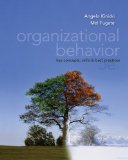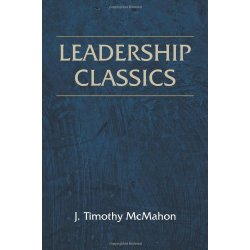|
Syllabi
for Organizational Theory 
Textbooks for the class:
Organizational Behavior: (Optional text)
Anglo Kinicki
ISBN: 9780078137204

Understanding Behaviors for Effective Leadership,
2/E (Optional text)
Jon P. Howell, New Mexico State University
Dan L. Costley, New Mexico State University,
ISBN-13: 9780131484528 (optional book)
Work:
Classics of Organizational Behavior (Optional text -
Presentation)
by Walter E. Natemeyer; Paul Hersey
ISBN: 978-157766-703-2

Leadership Classics (Optional text - Paper Write-up)
by J. Timothy McMahon
ISBN is
978-1-57766-638-7 / 1577666380 (Optional text

Snapshots of Great Leadership (Required text - 2nd Edition)
AUTHOR:Jon P. Howell & Isaac Wanasika
ISBN-13: 978-1-138-08817-7

For your enjoyment only Gary Latham:
EBM
Article and Book
List for your benefit...
Plan for the eight weeks:
1) Article from the Organizational Behavior Classics (Present)
2) Article from the Leadership Classics (Write-up)
3) Snapshots of Great Leadership (Present/YouTube type)
MGMT 664. Organizational Theory (3)
This course provides an analysis of formal organizations and
informal
relationships among individuals and small groups. This course
stresses the study of business organizations as a system of authority
and status, control and communication, decision-making centers
and leadership positions. Current research and case studies are used
for analysis. https://en.wikipedia.org/wiki/Organizational_theory
NOTE: YOU MAY USE THIS SCHEDULE AS A GUIDE.
DATE SUBJECT READING/EXAM
SCHEDULE
Week 1. = Overview of the Org. Theory Class
Week 2. = Organizational Behavior Week
Week 3. = OB and Decision Making (Articles chosen)
Week 4. = OB Classic Presentations (Articles Start 15 min avg.)
Week 5. = OB Class Presentations (Finish)
Week 6. = Leadership UBEL Week (Write-up email due Feb. 23)
Week 7. = Snapshots of Great Leadership (Presentations Start)
Week 8. = Final work Presented (ppt or you tube style Finish)
Assignments help info below (in addition to our work in class
and discussions):
Choose one question (1 per chapter) for extra credit (Review and Discussion
Questions):
Organizational
Behavior Classics (leadership section)-
OB article front page
Leadership Classics
-
Leader article front page
Exam/Assignment
- Speech/Teach/Technology Guidelines .pdf (portable doc format)
Assignment 1 - Organizational Behavior Classics
Article Presentation to the class and Email to Dr. Ortiz - Prepare and
formulate a presentation using either .ppt, abode, prezi, you tube,
websites, for class... 7-12 slides and 7 to 15 minutes... it should
include the following information at least:
1) Tell us something unique about yourself
(be creative);
2) Tell us about the author of the article, where are they now, any
buildings or schools named in their honor; what legacy they may have;
3) Tell us about the article itself; why does it matter to business
and/or any important findings in the article that matter; and
For extra credit...
4) Link the article to reality... In some way give us some solid takeaways
or advice (in business or in life - basically apply the knowledge to
reality for us)...
Rules are... (Your right!) There are no rules...
Be creative... Teach us... Impress us....
Most important enjoy it and have fun with the assignment!
Assignment 2 - Essay
write-up on the Leadership Classics Article
Prepare a 3-5 page Executive summary type report on the Leadership article
Your write up on a leadership may include,
but, is not limited to the following:
1. The leader/the style(s) the author uses;
2. How you see the topic in the article in business (reality), and;
3. Please use real world examples and link the article/leader's behavior
to the problem(s) we find ourselves solving in reality/or in life (use
ideas example or interview)...
4. Be creative in your summary and anlysis of the article...
- Basically what you knew before and what you know now about the subject
of leadership...
Assignment 3 - (Jon Howell book) Snapshots of Great Leaders Presentation
to the class and Email to Dr. Ortiz - Prepare and formulate a advanced
presentation using either .ppt, abode, prezi, you tube, websites, for
class... 7-12 slides and 7 to 15 minutes... it should include the following
information at least:
1) Tell us your strengths and weaknesses
(what you love about yourself and what will work on about yourself i.e.
I love my ability to…, I will surround myself with people
who complement my weaknesses...);
2) Tell us about the article itself; why does it matter to business
and/or any important findings in the article that matter;
3) Tell us about the Leader(s) [if pros and cons] in the article, where
are they now, what legacy they may have for business today, what you
think of the leader, what you found out from your additional online
(or first hand) research, what we can learn from them and use in a positive
way along with what might we might avoid from their personality, add
any interesting stories your wish to share (life), etc. . . ; and
For extra credit...
4) Link the article to reality... In some way give us some solid takeaways
or advice in business or in life from the legacy of the leader
- Basically apply the knowledge to reality for us...
- Finally as always "The Rules are"...
(Your right) There are no rules... Be creative... lead your own work...
(Make it fun, interesting, informative and of course something you and
I will be proud of!)...
EXAM TBA
Guidelines below could help you analyze different
leaders you are presenting/writing on.
Presentation/Paper
Guidelines...
Due date! Push yourself... The
idea is that you will give yourself a deadline and finish the work on
your terms. Owning your own behavior is better than having others tell
you what to do! (That is what leaders and entrepreneurs do...)
Organizational Behavior Course Outline
and PowerPoint Presentations
Chapter One
Needed: People-Centered Managers and Workplaces
Chapter Two
Organizational Culture, Socialization,
and Mentoring
Chapter Three
Developing Global Managers
Part Two Managing Individual Level Factors
Chapter Four
Understanding Social Perception and Managing
Diversity
Chapter Five
Appreciating Individual Differences: Intelligence,
Ability, Personality, Core Self-Evaluations, Attitudes, and Emotions
Chapter Six
Motivation I: Needs, Job Design, and Satisfaction
Chapter Seven
Motivation II: Equity, Expectancy, and
Goal Setting
Chapter Eight
Improving Performance with Feedback, Rewards,
and Positive Reinforcement
Part Three Managing Group Level Factors and Social Processes
Chapter Nine
Effective Groups and Teams
Chapter Ten
Making Decisions
Chapter Eleven
Managing Conflict and Negotiating
Chapter Twelve
Communicating in the Digital Age
Chapter Thirteen
Influence, Power, and Politics: An Organizational
Survival Kit
Part Four Managing for Organizational Effectiveness
Chapter Fourteen
Leadership
Chapter Fifteen
Designing Effective Organizations
Chapter Sixteen
Managing Change and Organizational Learning
Organizational Behavior
Course Outline and PowerPoint Presentations
PART I: BASIC LEADERSHIP CONCEPTS
AND ISSUES
CHAPTER 1 Leadership and Its Importance
CHAPTER 2 Leadership Behavior and Processes
CHAPTER 3 Contingency Models of Leadership
PART II: CORE LEADERSHIP BEHAVIORS
CHAPTER 4 Supportive Leadership Behavior
CHAPTER 5 Directive Leadership Behavior
CHAPTER 6 Participative Leadership Behavior
CHAPTER 7 Leader Reward and Punishment
Behaviors
CHAPTER 8 Charismatic Leadership Behavior
PART III: EMERGING LEADERSHIP BEHAVIORS
CHAPTER 9 Boundary-Spanning and Team
Leadership
CHAPTER 10 Building Social Exchanges
and Fairness
CHAPTER 11 Followership
PART IV: CURRENT LEADERSHIP ISSUES AND INTEGRATION
CHAPTER 12 Leadership Ethics and Diversity
CHAPTER 13 Leadership Development and
Organizational Change
CHAPTER 14 Integration and Conclusions
Other additional
PowerPoint Presentations
Chapter 1: Leadership
is Everyone's Business
Chapter 2: Leadership Involves an
Interaction between the Leader, the Followers, and the Situation
Chapter 3: Leadership is Developed
through Education and Experience
Chapter 4: Assessing Leadership
and Measuring its Effects
Chapter 5: Power and Influence
Chapter 6: Leadership and Values
Chapter 7: Leadership Traits
Chapter 8: Leadership Behavior
Chapter 9: Motivation, Satisfaction
and Performance
Chapter 10: Groups and Teams
Chapter 11: Characteristics of the
Situation
Chapter 12: Contingency Theories
of Leadership
Chapter 13: Leadership and Change
Email all work attached in an email to: lortiz@nmhu.edu
APA Example
Please use APA style for your paper (click
below to go to their website):
APA Style
BACK TO MAIN PAGE
|





